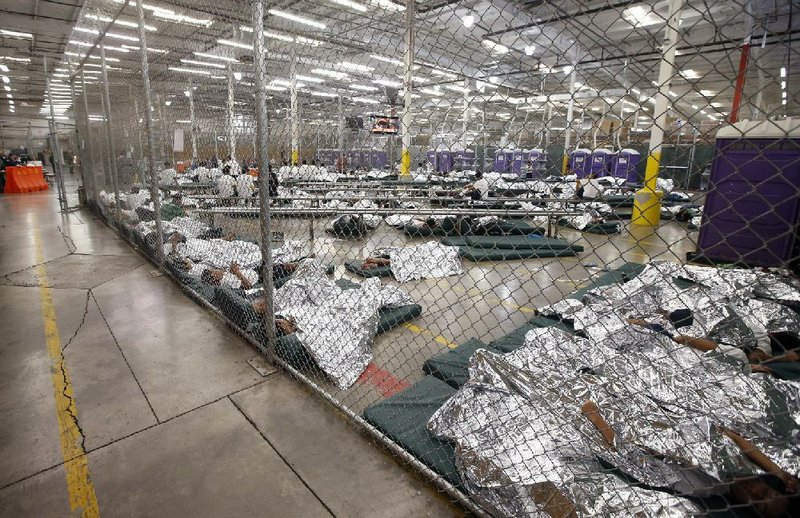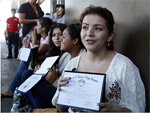BROWNSVILLE, Texas -- Children's faces pressed against glass. Hundreds of young boys and girls covered with aluminum foil-like blankets next to chain-link fences topped with barbed wire. The pungent odor that comes with keeping people in close quarters.
These were the sights from Wednesday tours of crowded Border Patrol stations in south Texas and Arizona, where thousands of illegal aliens are being held before they are transferred to other shelters around the country.
It was the first time the news media were given access to the facilities since President Barack Obama called the more than 47,000 unaccompanied children who have entered the country illegally this budget year an "urgent humanitarian situation."
The surge in minors, mostly from Central America, has overwhelmed the U.S. government. It also prompted Texas officials Wednesday night to order a surge in state law enforcement resources to the border in an effort to help stop the influx.
Texas Gov. Rick Perry and other state officials authorized the Department of Public Safety to begin emergency "surge operations" along the border with Mexico. They authorized the department to spend on the surge as needed and provided an additional $1.3 million per week, according to a statement from Perry's office.
Department officials will be expected to report results of the surge to the governor and Legislature "periodically," the statement said.
"Texas can't afford to wait for Washington to act on this crisis, and we will not sit idly by while the safety and security of our citizens are threatened," Perry said.
The law enforcement surge is expected to continue through the end of the year, the statement said.
The children pose a particular challenge because U.S. law requires that they be transferred from Border Patrol stations like the ones in Texas and Arizona to the Department of Health and Human Services within 72 hours.
The agency's network of some 100 shelters around the country has been over capacity for months and is now caring for more than 7,600 children.
Children began backing up in already overcrowded Border Patrol stations. Eventually, the Border Patrol began flying them to Arizona, where it set up a processing center in the border city of Nogales, where reporters also were granted access Wednesday. From there, the children are sent to private shelters or temporary housing at barracks on military bases in California, Texas and Oklahoma.
But the children at Fort Brown in Texas remain in the custody of an agency ill-equipped to care for them. On Wednesday, a group of about a dozen girls of perhaps 5 or 6 sat under another tent outside the shower trailer, dark hair wet and shiny.
Women wearing blue gloves combed each girl's hair. Tables held stacks of clean bluejeans, T-shirts and toiletries.
Deeper into the yard, teen girls kicked a soccer ball and tossed a football with workers from the Federal Emergency Management Agency.
In Nogales, girls playing soccer with two male border agents shrieked when their ball crossed over the chain-link fence and away from the small recreational area covered by a white tent. Others playing basketball cheered on their teammates.
But inside, the approximately 1,000 children in the 120,000-square-foot warehouse were silent. In a roomy area with teenage boys, a large, high-definition TV playing the World Cup went largely ignored.
A small group of boys in that fenced-in area played soccer, but most lay on tiny mattresses and covered themselves with thin, heat-reflective blankets that look like aluminum foil.
Chain-link fences 15 feet high and topped with barbed wire separate the children by age and sex.
Federal agents said they could not provide an estimate of the number of detainees at the facility because the figure is fluid as children transition in and out.
Information for this article was contributed by Christopher Sherman and Astrid Galvan of The Associated Press and by Molly Hennessy-Fiske of the Los Angeles Times.
A Section on 06/19/2014


